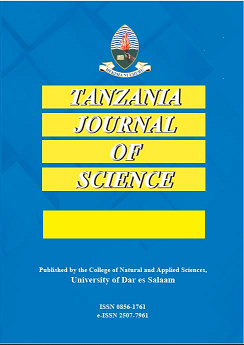Modelling Malaria Dynamics in Children under Five Years, Pregnant Women and the Influence of Temperature
DOI:
https://doi.org/10.4314/tjs.v50i4.10Keywords:
Basic reproduction number, malaria-free equilibrium, model simulation, model analysis, temperature variationsAbstract
Malaria remains a major public health problem worldwide and it affects the livelihood of people particularly children under 5 years and pregnant women. This study formulates and analyzes a mathematical model that incorporates children under five years, pregnant women and influence of temperature on the transmission dynamics of malaria. The next generation matrix method is applied to compute the basic reproduction number. Analysis shows that malaria-free equilibrium point exists and it is globally asymptotically stable when . Numerical simulations show that the rate of infections in both human and mosquito populations increases as temperature increases. Higher temperatures generally increase the rate of infection in both human and mosquito populations, with distinct impacts on children under five years and pregnant women.


